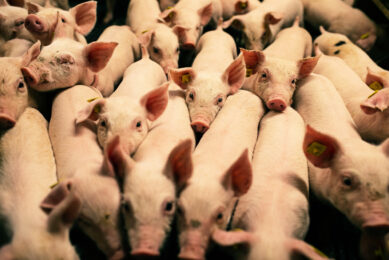How to reduce dependence on animal plasma?
Animal plasma is a unique ingredient in that it invariably increases animal performance, the more under less healthy conditions. Previous research has clearly demonstrated it is the heavy molecular weight fraction of animal plasma, which contains the immunoglobulins, that is largely responsible for improved gastrointestinal health that manifests into enhanced growth, evidenced by higher feed intakes post-weaning.
Animal plasma is a unique ingredient in that it invariably increases animal performance, the more under less healthy conditions. Previous research has clearly demonstrated it is the heavy molecular weight fraction of animal plasma, which contains the immunoglobulins, that is largely responsible for improved gastrointestinal health that manifests into enhanced growth, evidenced by higher feed intakes post-weaning.
Yet, animal plasma has a strong negative feature. It is very expensive. Especially following the reintroduction of (porcine only) plasma in the European Union, this ingredient accounts for over one third of overall feed cost, even when it is included in a moderate 2-3% rate in post-weaning feeds. Animal plasma has always been expensive, but today it has become almost impossible to use it.
So, how to replace it? The only direct solution is to find other sources of immunoglobulins such as those from bovine colostrum and hyper-immunised eggs. Unfortunately, these products are either too expensive themselves, or otherwise too specific against certain strains of pathogens.
In my opinion, the best way to reduce dependence on animal plasma is by improving overall animal health, as it has been shown plasma exerts its highest effect on less than optimal health conditions. Improving diet quality and complexity also reduces the need for animal plasma. For example, increasing lactose by 5% can reduce dietary animal plasma by 1%, at least in most cases! Finally, it should be kept in mind that animal plasma should be used only up to the level that induces a substantial increase in feed intake. For most high quality diets this level is around 3%, but for lesser feeds this level may be increased up to 5%!
One final aspect in selecting animal plasma sources; our research has clearly demonstrated that the level of crude protein is a poor index for predicting animal performance. In contrast, the level of immunoglobulins, and even more specifically IgG, is the best index in selecting sources of animal plasma. On average, a good source of plasma should be able to guarantee a level of around 15% IgG.











